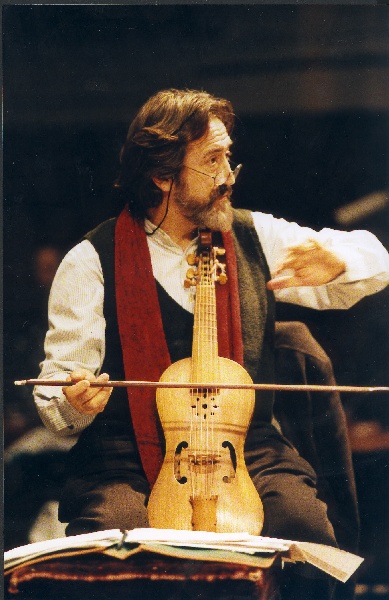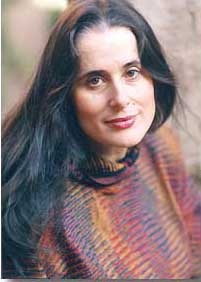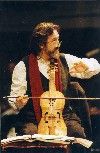Hesperion XXI led by Jordi Savall play Sephardic Music at Tanglewood
Montserrat Figueras sang
By: Michael Miller - Jul 16, 2007
Hesperion XXI: The Sephardic DiasporaTanglewood Festival, Seiji Ozawa Hall, Thursday, July 12, 2007 at 8.30 pm
Hesperion XXI, Jordi Savall, director: The Sephardic Diaspora: Ballads and Instrumental Music from Medieval Spain to the eastern Mediterranean
Montserrat Figueras, vocalist
Pierre Hamon, flutes
Jordi Savall, lira, vielle, rebab
Driss El Malouni, oud
Begona Olivida, psalterium
Dimitri Psonis, santur and morisca
David Mayoral, percussion
Early music and historically informed performance groups are prominent at Tanglewood this year, and the series which will include the Netherlands Bach Society and the Orchestra of the Eighteenth Century, began with a performance by Hesperion XXI led by Jordi Savall with Montserrat Figueras, two pioneers of early music, who founded the group, as I mentioned in my discussion of Mauricio Kagel's Exotica, in 1974. (As I also mentioned there, this review should be read as a pendant to that one.) This new presence marks a significant innovation at Tanglewood, a welcome one, in my opinion, because it acknowledges a important stream in contemporary musical taste and also gives it a chance to reach new audiences. My impression on surveying the Florence Gould Auditorium was that this was indeed the case. The audience certainly didn't look like an early music crowd, rather like the usual Tanglewood audience who turn out to hear any of the "blue chip" performers Tanglewood specializes in. Although they got a bit restless towards the end of the two-hour program, they seemed to enjoy it and applauded enthusiastically, earning a substantial encore.
The group was originally billed to play a program they have been performing for some time, "Paradise Lost: Music of Jews, Christians, and Muslims at the time of King Alfonso X of Castille, 1221-1284," but instead they performed a more specialized program devoted to the music of the Sephardic Diaspora, ballads and instrumental music Sephardic Jews brought along with them all around the Mediterranean world after their expulsion from Spain by King Ferdinand in 1492, not to say that this music wasn't colorful, rhythmically lively, and thoroughly accessible to an audience of non-enthusiasts. I see from their agent's site that Hesperion is taking this program with them to every stop on their American tour this summer.
On a musical level, a comparison of this program makes with Kagel's Exotica is a perfect example of contemporary (although perhaps not "cutting edge," since Hesperion have been performing it for quite a few years) taste and how it relates to the exotic in music. In my review I point out that Kagel's music is strong, but somewhat dated (an obstacle it deserves to overcome). So is the "Hootchy-Kootchy," another icon in the history of western assimilation of exotic music. [I thank Professor Ralph P. Locke of the Eastman School of Music for this reference.] In any case, the music Hesperion played Thursday evening certainly sounded exotic and needed no Hollywood arrangement to make that clear to any audience. It is the very type of Mediterranean exotic, whether Moorish, Turkish, Arab, or Jewish, and a familiar one at that, through its popular manifestations, viz. the Hootchy Kootchy. However, it is clear that contemporary audiences, even Tanglewood audiences, are comfortable with approaching this music more or less straight on, as purified and refined by Hesperion XXI, both as a manifestation of world music as well as early music, and not as Kagel's negation of European practices, a mind-expanding musical equivalent of LSD, or Hollowoodized exoticism, as in Kismet, or the like. (Interestingly, André Previn arranged and conducted George Forrest's music for the MGM movie—music which borrowed a Russian composer's second-hand exoticism for its most famous number. In music all roads lead to Tanglewood.) In any case, while the texts were all in Spanish, and some were set in Spain or Morocco, the program covered all corners of the Mediterranean world and beyond: Morocco, Sarajevo, Sofia, Salonika, Rhodes, Turkey, Smyrna, Alexandria, and even Jerusalem. As one might expect the music gravitated towards the minor mode, occasionally lugubrious in mood, but also often full of energetic rhythms and florid tunes.
There is little particularly Jewish about the ballad texts and the stories they relate. They are populated by knights, kings, princesses, etc.—the universal human cast of characters. One striking feature of them is their often extremely unpleasant or morbid tone, often touching on family relationships twisted by willfulness or delusion and resulting in adultery, curses, or murder, although one ends in reconciliation. The world of Hesperion's selection is hard and even tragic, although perhaps not quite as violent as that of the Scottish ballads, for example.
As an encore Hesperion played their improvisation on the tune "Axerico," which as Mr. Savall explained, was traditionally played in different centers with different rhythms and tempi. Their improvisation included many of these, bringing home the unity of Mediterranean Jewish culture, as well as its local diversity.
Of course all members of Hesperion XXI played impeccably, led by Jordi Savall, who played his bowed instruments with deep concentration. Pierre Hamon produced beautiful throaty sounds with his flutes, and David Mayoral played his numerous percussion instruments with great virtuosity, as well as Driss El Malouni, oud, Begona Olivida, psalterium, Dimitri Psonis, santur and morisca. The renowned Montserrat Figueras sang with a naturally sumptuous voice, enhanced with little if any vibrato, and she brought out every bit of expression demanded by these dramatic ballads. The instrumental pieces were compelling with their striking rhythms and eloquent tunes, whether in the string part or the flutes. Over the years Hesperion has successfully brought early music to many new ears with their virtuosity, showmanship, and understanding of the music beyond the limits of dry scholarship. In this performance some of the musicians entered in procession with Mr. Hamon playing the bagpipes, and Ms. Figueras, made her entrance spotlighted on an outcrop of the second balcony above the stage. As effectively as their refined virtuosity cuts to the core of the music, it also goes far beyond what must have been the usual level of musicianship, when this music circulated in its day. When we hear this music played by Hesperion, we are hearing what only the very grandest among the Jews would have heard.




